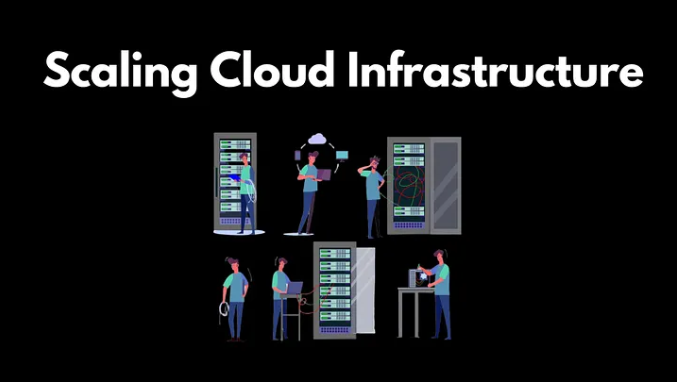Effective Strategies for Scaling Cloud Infrastructure and Reducing Costs
 DevOps Insight with Irene
DevOps Insight with Irene
A few years ago, a small SaaS startup launched with a great idea — an AI-powered personal finance assistant. The founders were excited, and their first instinct was to build for scale. They provisioned redundant cloud resources, assuming they would need them soon. They were ready for millions of users.
By the end of their first quarter, they had spent more on infrastructure than they had earned in revenue. Except, they didn’t have millions of users. They had a few hundred. Yet their cloud bill was climbing north of $1,000 per month. Before they had a chance to iterate on their product-market fit, they were drowning in infrastructure costs. Within a year, they shut down.
This is a common story — that plays out in different variations across the startup world. Founders and engineers often over-engineer their infrastructure based on hypothetical future needs, rather than present realities.
As a DevOps and infrastructure engineer, I have repeatedly seen this mistake: teams spend excessive time and resources designing for massive scalability when they haven’t even validated their core business model. In this article, I will share important lessons I’ve learned throughout my journey and how to strike the right balance between scalability and efficiency.
The truth is, you don’t need to scale until your business demands it.
The High Cost of Premature Scaling
AWS, GCP, and Azure provide powerful infrastructure solutions, but they come at a steep price. When teams configure auto-scaling groups, distribute workloads across multiple availability zones, and implement advanced caching strategies before their traffic justifies it, they introduce unnecessary complexity and cost.
Where the Costs Add Up
Cloud Providers Are Expensive: Distributed architectures come with increased networking, storage, and data transfer costs.
Overprovisioned Resources Drain Budget: Teams often allocate excessive computing power without fully utilizing it, leading to wasted spend.
Operational Complexity Kills Agility: Managing a multi-cloud, multi-region setup requires dedicated DevOps expertise, adding overhead.
Scaling Strategies
Picking the Right Approach
Scaling is a fundamental concept in software architecture, referring to a system’s ability to handle increased load. Scaling isn’t one-size-fits-all. Businesses need to choose the right strategy based on demand — application specific needs and growth patterns. Here are the three main approaches:
Vertical Scaling (Scaling Up): Enhancing the capacity of a single server by adding more resources, such as CPU or RAM. It’s like upgrading a computer to make it more powerful.
Horizontal Scaling (Scaling Out): Adding more servers to distribute the load. This approach increases capacity by expanding the number of machines working together.
Diagonal Scaling (A Balanced Approach): Diagonal scaling is a flexible approach that combines both vertical and horizontal scaling, adjusting dynamically based on current demand. Instead of choosing one strategy upfront, it starts with vertical scaling — adding more CPU, memory, or storage to a single machine until it reaches its limit. Once further growth is needed, it shifts to horizontal scaling by distributing workloads across multiple instances. For example, a business might begin by upgrading its database server, but as traffic grows, it can introduce read replicas and load balancing to manage increasing queries efficiently.
The key advantage of diagonal scaling is adaptability — it allows infrastructure to grow when demand rises and scale down when demand drops, ensuring cost-efficiency without unnecessary complexity.
A Smarter Approach
When to Use the Right Scaling Strategy
Instead of over-engineering infrastructure and blindly deploying a distributed system from the beginning, companies should start simple and scale incrementally, teams should optimize their architecture based on actual usage patterns:
Use Vertical Scaling First: If your application is CPU/memory-bound and traffic is predictable, upgrading to a larger instance is usually the simplest and most cost-effective solution.
Introduce Horizontal Scaling When Needed: If you’re hitting consistent performance bottlenecks due to concurrent traffic spikes, then adding more instances makes sense.
Monitor Before Scaling: Performance bottlenecks should be analyzed first — sometimes caching, query optimization, or asynchronous processing can eliminate the need for immediate scaling.
For applications with fewer than 1,000 monthly users, a monolithic architecture with vertical scaling is often one of the best approach.
Why Monoliths Work Better at Early Stages
Many startups jump straight into microservices, thinking it’s the modern way to build software. However, microservices introduce communication overhead, deployment complexity, and operational challenges. A well-structured monolith is often easier and cheaper to maintain early on as it provides:
Lower Infrastructure Cost: A single well-optimized instance is cheaper than running multiple small instances with distributed overhead.
Simplified Debugging & Maintenance: Fewer moving parts mean fewer things breaking at scale.
Easier to Iterate: Early-stage applications require rapid development cycles, not excessive infrastructure.
Practical Steps to Scale the Right Way
Keep it Monolithic Initially: Until you hit scale bottlenecks, avoid microservices and distributed patterns.
Optimize Before Scaling: Improve database queries, implement caching (Redis, Memcached), and optimize code efficiency before provisioning more resources.
Benchmark Your Limits: Use load testing to define at what threshold your infrastructure needs to scale.
“But I Don’t Want to Configure Things Twice!”
A common argument against starting small is that reconfiguring for scale later requires extra work. However, this thinking ignores two critical realities:
Your Scaling Needs Will Evolve Unpredictably: Designing prematurely for a million users results in unnecessary complexity.
Modern Migration Is Easier Than Ever: Tools like Terraform, Kubernetes, and cloud-native databases simplify infrastructure changes.
Investing in massive scalability before demand exists is like renting a stadium before you’ve formed a local football team.
Is Serverless Really Cost-Effective?
Serverless computing is often marketed as an affordable way to scale, but poor configurations can lead to unexpected costs. Misconfigured AWS Lambda, Firebase, or Vercel functions have resulted in five-figure invoices due to:
Execution Duration Costs: Poorly optimized functions that run longer than necessary drive up costs.
Concurrency Limits and Scaling Behavior: Auto-scaling adds more instances, each incurring additional costs.
Networking Costs: Frequent external database calls lead to excessive cross-region networking charges.
Serverless isn’t inherently bad, but it requires careful tuning. It’s not always the cheapest solution, especially when running continuously.
The Importance of Building for Scalability — Without Prematurely Scaling
While premature scaling is a mistake, engineers should still design applications for future scalability without introducing unnecessary overhead.
How to Design for Future Scaling
Decouple Core Logic: Structuring business logic modularly makes migrating to microservices easier.
Choose Databases That Scale: PostgreSQL, MySQL, and other relational databases can handle significant scale if architected properly with indexing, replication, and partitioning strategies.
Implement Caching from Day One: Using a caching layer like Redis significantly reduces the need for excessive scaling by offloading repeated queries.
Use Feature Flags and Modular Deployment: This enables incremental migrations without massive rework.
Avoid Cloud Vendor Lock-in: Open standards for databases, messaging queues, and storage provide long-term flexibility.
When to Actually Scale
There is a right time to move beyond vertical scaling and invest in horizontal scaling, distributed databases, and containerized workloads.
That time comes when:
Traffic consistently exceeds 10,000+ monthly users, and performance bottlenecks arise despite optimizations.
A single server is no longer enough due to CPU/memory constraints, even after vertical scaling.
Your team requires independent deployments, and the monolith slows down development velocity.
Your business model is validated, and you need high availability guarantees for paying customers.
Conclusion: Scale When Your Business Scales
Before designing for millions of users, ask yourself: Do I even have a thousand yet?
Many startups fail because they focus on enterprise-scale infrastructure before validating their business model.
So, as a business, what is the best infrastructure that won’t cost a lot but can scale when demand rises or falls?
The answer lies in diagonal scaling because the best infrastructure balances cost and scalability:
Start lean with minimal but efficient resources.
Optimize vertically first — improve performance before adding more machines.
Scale horizontally only when necessary.
Use automation to scale dynamically, avoiding unnecessary costs.
Scaling should be a response to growth, not a prediction of it. Businesses that scale too soon waste money and slow down development. The key is to build infrastructure based on real demand, not future assumptions.
By balancing lean infrastructure with scalable software design and actual business growth, engineers and startups can manage costs effectively while positioning themselves for future success.
Subscribe to my newsletter
Read articles from DevOps Insight with Irene directly inside your inbox. Subscribe to the newsletter, and don't miss out.
Written by

DevOps Insight with Irene
DevOps Insight with Irene
DevOps Insight shares practical tips on DevOps, Linux, automation, and cloud. You'll find actionable takeaways to build smarter and more reliable systems.